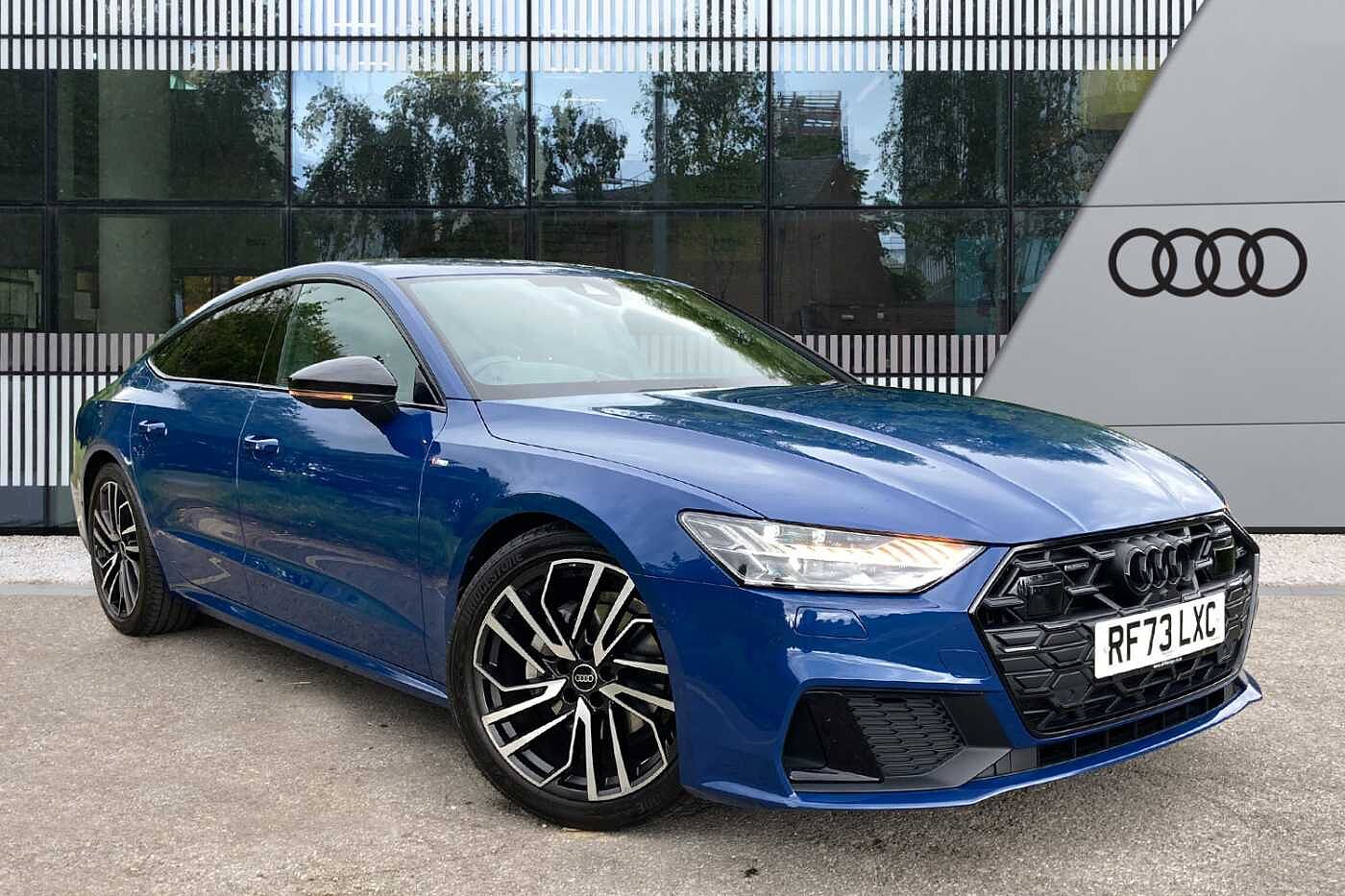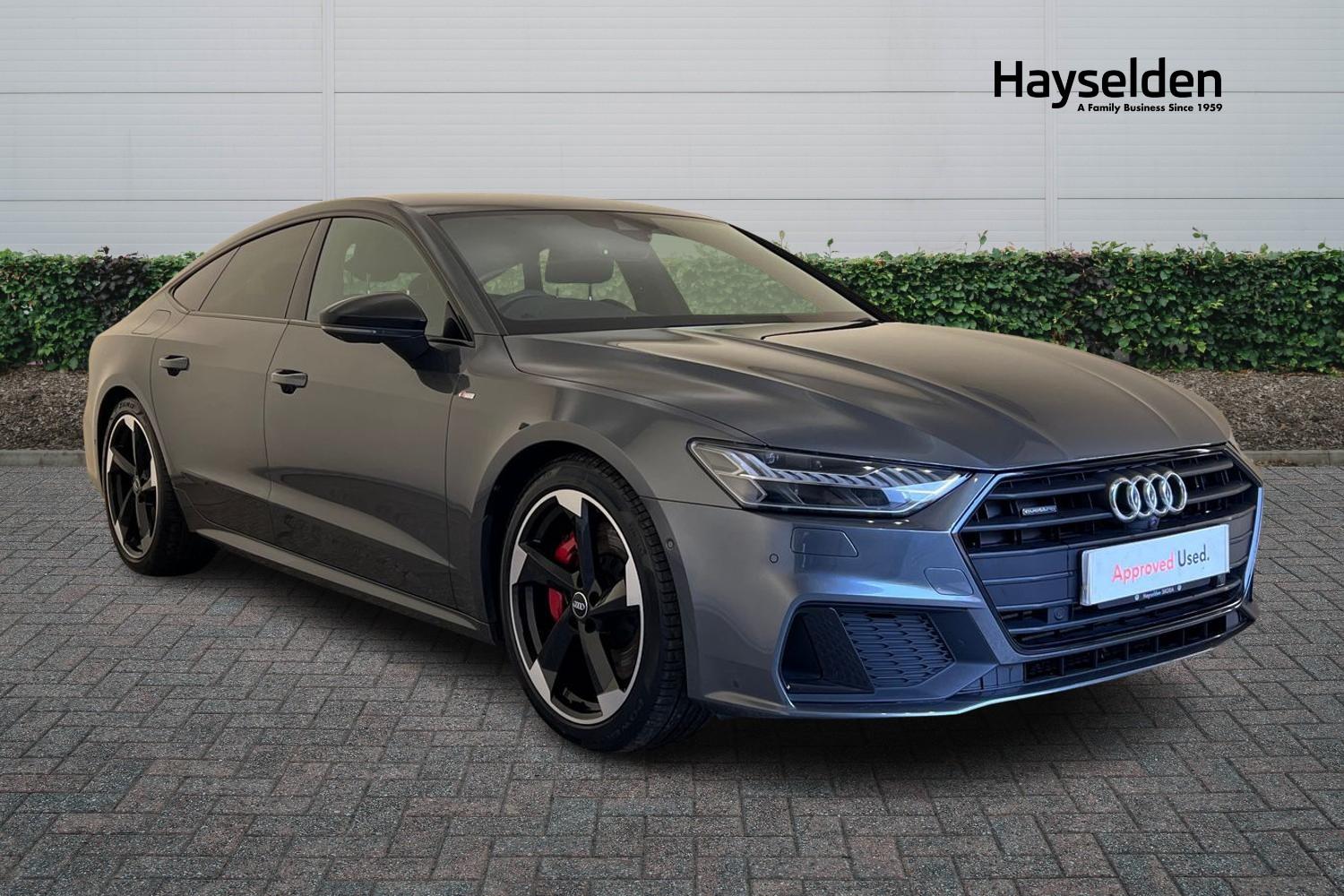Used Audi A7 for sale: everything you need to know
On the face of it, the Audi A7 is just an A6 with a fastback body style. But style goes a long way, and the A7’s attention-grabbing looks give it just a little more prestige than the other Audis with which it shares components, and in reality it serves as a half-way house between the executive A6 and the luxurious A8.
It’s played that role since the first generation model debuted in 2010, while the second and current-generation car made its debut in 2018. The A7 is a sleek, luxurious car that still catches the eye as it glides past, and cossets occupants in a hushed, well-built and immaculately trimmed interior.
The A7 isn’t alone in the market. The original Mercedes-Benz CLS beat the first A7 to market by several years and the third-generation car has only recently left the showrooms in 2023, while BMW’s 8-series Gran Coupe and even the all-electric Tesla Model S can be considered rivals. Read on to find out more about the Audi A7.
Should you buy an Audi A7?
The Mercedes-Benz CLS might get the credit for inventing the premium four-door coupe in the 21st century, but the Audi A7 Sportback didn’t do things by halves when it arrived in 2010. Based on the Audi A6 saloon, here was a car that majored on style but didn’t lose any of the A6’s quality, ability or desirability - in fact, the A7 built on the latter, and only gave away a small amount of practicality in return, helped by its hatchback luggage area.
All that applies to the current generation A7 too, launched in 2018. Perhaps the styling wasn’t quite as striking second time around, but with A6 underpinnings and an interior and technology lifted nearly wholesale from the prestigious A8 luxury saloon, the A7 still held plenty of appeal, something only enhanced when the inevitable S7 and RS7 performance models arrived.
If the sweeping roofline leads to you assume Audi has sacrificed passenger space, you’d only be partly right. Rear passenger space is still very good, and with a hatchback rather than a saloon-style boot, it’s even easier to load the luggage bay than it is with an A6 (though be aware that thanks to its battery pack, the TFSI e has slightly less luggage space than other A7s).
Up front, meanwhile, you get the usual top-drawer levels of materials and build quality. The A7 received the A8’s twin-tier touchscreen interior layout, which seems daunting at first glance but is admirably simple to use once you’re more familiar with it, with helpful haptic feedback for the virtual buttons on screen. And Audi’s Virtual Cockpit instrument cluster is as well laid-out and simple to interpret as ever.
Audi has offered several engine and transmission combinations over the years, but the current range of petrol, diesel, and petrol plug-in hybrids is straightforward, all based around 2-litre engines. Their lack of capacity is no barrier to strong performance, and the A7’s refinement is truly excellent, helped by the use of double-glazed windows that really cut down on wind noise.
It’s a relaxing car to drive too, if hampered slightly by a firmer ride quality than you might wish for (better on cars with air suspension, where fitted), while its weight cuts down on agility. It’s here that you might consider better-driving rivals like the Mercedes-Benz CLS and BMW 8-series Gran Coupe, though the Audi arguably tops them both in terms of style.
An Audi A7 not for you? We've got 1000s of used cars for sale to suit all budgets and needs.
What’s the best used Audi A7 model to buy?
You can find almost all of the A7’s qualities in the entry-level Sport model, which is handy. It still looks great, which is arguably the most important factor if you’re choosing it over something more sensible like an A6, while the slightly smaller 19-inch alloy wheels take the edge off the ride quality, so it’s most limo-like - and in the current range, you’ll find the same engines in Sport models as in the more expensive grades.
That said, the slightly older A7s are even more appealing, on account of their larger engines and the smoothness that comes with six cylinders rather than four. You’ll find them badged 55 TFSI for the 3.0-litre V6 petrol, and 45 and 50 TDI for the 3.0-litre V6 diesels. They’re definitely more in-keeping with the A7’s luxury car image than the four-cylinder units.
Used Audi A7 fuel economy and performance
- Audi A7 40 TDI: The sole diesel model currently available (outside of the S7) makes 204PS from a 2.0-litre TDI four cylinder, through a 7-speed S tronic automatic gearbox. 0-62mph comes up in 7.0 seconds, and the 40 TDI is capable of up to 51.4mpg combined. Like all A7s, quattro all-wheel drive is standard.
- Audi A7 45 TFSI: The 45 TFSI also uses a 2.0-litre engine, but this one is petrol-powered and develops 265PS, also using a 7-speed S tronic automatic transmission. It’s good for 0-62mph in 6.2 seconds, with combined economy of 37.7mpg.
- Audi A7 50 TFSI e: The combined efforts of a 2-litre, four cylinder turbocharged petrol engine and electric assistance (supplied by a 14.4kWh battery pack) yield 299PS, along with a 6.3-second 0-62mph time and combined economy of up to 217.3mpg, provided you charge the battery. Audi claims up to 41 miles of all-electric range.
What used Audi A7 trim levels are available?
The Audi A7’s trim levels have remained fairly consistent since the current model debuted in 2018, and actually you’ll find them replicated on the previous generation model too, with one or two changes. While the actual equipment might change slightly over time, the general hierarchy of Sport, S Line and Black Edition should give you an idea of whereabouts in the range you’re looking. In the current A7 range, the TDI, TFSI, and TFSI e engines are available in all three trim levels.
- The Audi A7 Sport might not be as sporty as the name implies, but nor is it some stripped-out base model. 19-inch alloy wheels and LED matrix headlights are standard, as is the A7’s pair of touchscreens, front and rear parking sensors, and a rear-view camera. The front seats are electrically adjustable too.
- The Audi A7 S Line takes visual inspiration from high-performance models like the S7 and RS7, with a more aggressive exterior styling pack, 20-inch alloy wheels, privacy glass, and leather and Dinamica artificial suede trim for the seats, with brushed aluminium trim inlays.
- The Audi A7 Black Edition is mainly a visual upgrade over the S Line, with a different design of 20-inch wheel and a black styling package that replaces all of the A7’s exterior brightwork (including the four-ringed Audi badge) with items in a gloss black finish. There’s also a sports steering wheel and carbon interior inlays.
Used Audi A7 dimensions and boot size
The Audi A7’s dimensions are:
- Length: 4969mm
- Width: 1908mm (without mirrors), 2118mm (with mirrors)
- Height: 1422mm
- Ground clearance: N/A
The Audi A7’s boot size is:
- 535 litres (380 litres TFSI e)
- 1390 litres with the rear seats folded down (1235 litres TFSI e)
Used Audi A7 road tax
All current Audi A7 models cost more than £40,000 brand new, which means after their first year VED or ‘road tax’ rate based on CO2 emissions, they’ll be subject to a surcharge for the next five years. This means you’ll pay £570 in years two to six for the TFSI and TDI models, and £560 each year over the same period for the plug-in hybrid TFSI e. A7s registered prior to April 2017 will be subject to tax based on their CO2 emissions.
How much is it to insure an Audi A7?
The Audi A7 won’t necessarily be cheap to insure, but costs should be roughly in line with the model’s rivals. In the 1-50 insurance group spread, all A7s fall between group 40 and 50 - with the higher-performance models naturally towards the top of that band.
Read our full Audi A7 review


